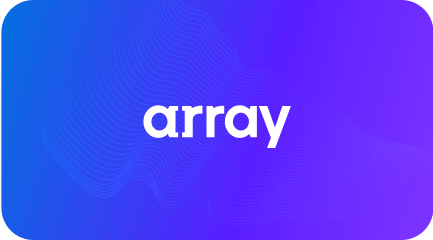Eric Guidice is a founder at headcount365, a software that replaces spreadsheet based recruiting management with a platform that connects your ATS, Hiring Managers and Finance team. Prior to starting headcount365, Eric’s consulting firm Unicorn Talent, provided recruiting advisory to over 100 startups, following his experience as an internal recruiting leader for companies like Uber, Bird Scooters and Clutter.
The intake session is one of the most underrated meetings in recruiting. It’s a critical opportunity for recruiters and hiring managers to set a game plan before opening a role and align on everything from process to assessment.
An effective intake session should accomplish three key things:
- Provides the recruiter with all materials to begin the recruiting process, including:
- A job description
- 30-second pitch on why the job is open
- The hiring process, interviewers, assessments, and other tools
- Defines and aligns on the competencies needed to make a hiring decision by covering:
- What are the competencies needed to perform the role?
- What level of skill or experience in each competency earns a candidate a “yes” on the interview scorecard?
- Highlights and fixes any discrepancies in the hiring request, like:
- Do the responsibilities match the company’s leveling framework?
- Is the salary reasonable for the responsibilities?
- Do the competencies match the job title (i.e., management competencies or an individual contributor role)?
Efficiently pulling this information from the intake session for use in an interview process allows recruiters to reduce funnel conversion rates and time to fill while driving accountability with hiring managers.
Now that you know what an intake meeting should accomplish, let’s dive into the four critical areas you should cover during the conversation.
4 things to cover during a recruiting intake meeting
1. Determine your org structure.
Kick the conversation off by discussing where the new role will lie in your current org chart. Discuss questions like:
- How many layers is this role away from the CEO?
- Who does this role report to?
- Does this role have peers?
- How many direct reports does this role have?
- How many total reports does this role have?
Example: A recruiter will report to the VP of Talent, who reports to the CHRO, who reports to the CEO. They do not manage anyone but have three peers who specialize in individual hiring.
Why it’s important: Management responsibility is one of the key indicators of level and title alignment in a role. This will help recruiters hone in on their sourcing target regardless of the prospect’s company size or title. Discrepancies in the perception of a job level by interview participants lead to declines.
2. Define 3 core competencies for the role.
Next, it’s time to tackle the core competencies needed to be successful in the role. To determine the right competencies, ask the hiring manager:
- If you had to describe this job to a layperson, what are the three main things this job does?
- What are the sub-competencies that make up core competencies?
- What’s a short description of each competency and is it reflected in the job description?
Example: A recruiter should make three hires per month, manage a full cycle recruiting process, and take on projects that help the overall recruiting organization.
Why it’s important: Job competencies are tangible skills that should be written in the job description and can be identified in a candidate’s profile/resume. Each main competency should be assigned to an expert interviewer to validate the claims made in a resume.
3. Set your ‘meets expectations & exceeds expectations’ criteria.
This is an important yet often overlooked part of the conversation. Once you’ve determined your competencies, you then need to map out what meeting and exceeding expectations looks like for each one:
- Meets expectations criteria on each competency should be the minimum qualifications for driving a “yes” decision throughout the hiring process.
- Exceeds expectations criteria should be aligned to actions that have earned previous employees promotions or high bonuses.
Example: A recruiter who makes 3 hires per month with a 70% offer accept rate, and a candidate NPS of 80% or better meets expectations. A recruiter who makes 4 hires per month, with an 80% offer accept rate and an NPS of 95% exceeds expectations.
Why it’s important: Without specific criteria to measure and a defined yes/no framework, individual interviewers are too general and rely on their intuition to make decisions about a candidate’s capability. These intuitions are usually inaccurate and can lead to early termination or low performance.
4. Map out your interview process.
Close out the conversation by walking through each step of your interview process and determining which person or assessment measures a given competency. Ask yourself:
- Who are the experts in measuring each individual competency?
- What pre-work should a candidate do to be successful in the interview?
- Is there an assessment tool that can better assess a skill (like a writing sample, or pair programming)?
Example: A peer recruiter will evaluate the recruiter’s ability to make 3 hires a month, while a hiring manager will evaluate the candidate’s full cycle recruiting process, and the VP of Talent will evaluate the candidate’s ability to take on projects that help the overall recruiting organization.
Why it’s important: Good interviews follow the “sum of all parts” framework, where individual experts measure specific competencies with defined yes/no criteria. Assigning a specific expert ensures no overlap in measurement while providing the decision maker with key information to make a decision. Once a decision is made, the recruiter has skills-based feedback to deliver to candidates not selected for a role.
Using BrightHire: BrightHire records and transcribes every interview, so you can easily re-watch conversations and assess a candidate’s job competencies in a consistent, objective manner. By being able to revisit key interview moments and hear a candidate’s response in their own words, you can reduce bias, improve candidate experience, and equip recruiters with actionable feedback should they have to decline the candidate.
Great intake sessions ahead
Now that you know the four most important things to cover during an intake meeting, you can make the most out of the conversation and truly align with your hiring managers.
Want to take your intake meetings one step further? Download this editable template to build a strong customer success profile during your next session.









